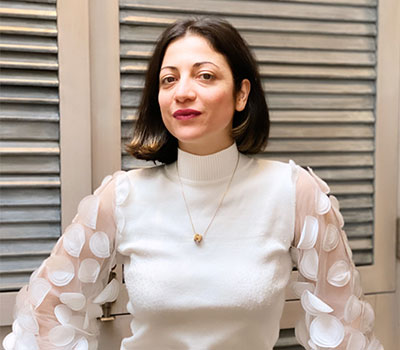Despoina Karapostolaki has been working at Amali, a Mediterranean restaurant on Manhattan’s East Side, since she arrived in New York from Athens seven years ago. It was here that she became interested in wine, working with owner James Mallios and former beverage director Frankie Mace. Now she runs the program, charming customers into trying Greek wines whenever she can.


Two Greek wines made your Most Popular list, and they couldn’t be more different: Boutari’s Santorini Assyrtiko and a 2006 Domaine Economou Sitia Liatiko.
When I go to table that’s looking at the list, I’ll introduce myself, and say, “I’m happy to help you if you’d like a recommendation for a Greek wine.” Only five or six pages out of 26 pages are Greek wine; if I don’t talk about it, they are probably are going to skip it. Most people will respond to it—they’ll say, “Oh, I never tried one before, I would love to!” Or, “We went to Santorini and tried the wine once; which one would you recommend?” When it’s a guest’s first time with Greek wine, we go the safe way with Santorini because they are very familiar with the island. Boutari is a very popular producer, and they do really nice work with Santorini—it has a very nice balance.
When they want to do red, it depends on what they are ordering, and their budget, but we might offer xinomavro, which we compare to nebbiolo. The Economou, since it’s from Crete, and guests are not familiar with red wines from Crete, we have to be very specific when describing it; it’s very unique. It has this burned caramel color, light to medium body, soft tannins; and it goes well with the sea bass, or the lamb chops. People who try it just love it, even if the price is kind of expensive for a Greek red.
How did the Château Joanin Bécot Castillon Côtes de Bordeaux become your best new success?
We don’t have a big selection [of Bordeaux], but for people who just know they like cabernet and merlot, it goes nicely with some of the dishes we have, like the lamb, or steak, or tartare. And they can find cheaper options [in Bordeaux] than they can in Barbaresco or Brunello. We’ve carried this wine for two or three years now, but James went to the château last winter. It’s a good price, and a good wine, and they have the experience of being there, meeting the people. Only about 20 percent of guests point to a wine without chatting about it; most people want to talk about it.
Given Greece’s long history with sweet wines, it’s interesting that your best-selling dessert wine is a Port [Churchill Porto LBV].
[Customers] know Port; they don’t know Samos. We used to give [Samos] for free, as an after dinner drink; we were talking about the island, and the process of making a fortified wine. The Port, it’s mostly men ordering, especially in the wintertime: After dinner, they do Port. And it goes with our dessert menu; we have a chocolate mousse with strawberry.
is W&S’s editor at large and covers the wines of the Mediterranean and Central and Eastern Europe for the magazine.
This is a W&S web exclusive. Get access to all of our feature stories by signing up today.
















